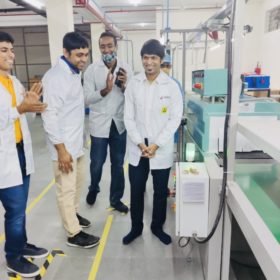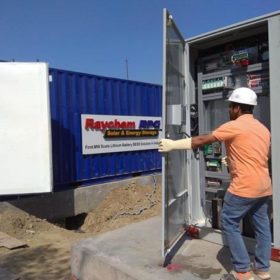Panasonic launches module series compatible with its Evervolt battery
Available in four different products, the series features a conversion efficiency of 20-21.2%. Two of the panels are packaged in a sleek, all-black aesthetic.
Exide Industries increases stake in lithium battery JV with Leclanché
With an additional investment of INR 33.17 crore, Exide Industries’ shareholding in the joint venture company has increased by 2.28% to 80.15% of the paid-up equity share capital.
Government planning electric vehicle charging kiosks at 69,000 petrol pumps
An underdeveloped charging ecosystem is one of the many factors restricting the uptake of electric four-wheelers in India. A limited number of products and higher costs than combustion-engine powered vehicles are the other deterrents.
Inverted Energy opens 100 MWh lithium battery plant
The lithium battery assembly facility at Okhla, New Delhi, would initially produce batteries for energy storage in residential, commercial and industrial sectors, and for electric mobility applications. The plan is to eventually cater to critical applications like telecom and healthcare as well.
Best Power Equipments bets on solar
The electronics manufacturer says it will switch focus to solar panels and lithium battery storage as it launches an inverter series for rooftop PV.
How long will the lithium supply last?
Researchers have sounded the alarm. If no serious efforts are made on second-life battery use, recycling and vehicle-to-grid applications, decarbonization efforts may hit the buffers a lot sooner than expected.
BHEL wins TERI order for battery energy storage systems
The state-owned engineering firm will supply and set up a cumulative 410 kWh of battery energy storage systems in Delhi under UI-ASSIST (US-India Collaborative for Smart Distribution System with Storage) initiative of TERI.
Government allows sale, registration of electric vehicles without pre-fitted batteries
Delinking the battery (which accounts for 30-40% of the total vehicle cost) will bring the upfront cost of the electric 2-wheelers (2W) and 3-wheelers (3W) to be lower than internal combustion engine counterparts. The battery could be provided separately by the original equipment manufacturer or the energy service provider.
Government priority is to make Li-ion batteries in India: Transport minister
The government is acquiring lithium mines abroad to ensure raw material availability for electric vehicle battery production. Among other technology alternatives for EVs, it is looking at developing indigenous hydrogen fuel cells with hydrogen derived from biomass.
Prioritising clean energy will be key to economic recovery
Cost savings associated with switching to least-cost energy solutions like wind and solar can be redeployed for economic recovery. At the same time, building resilience on fronts like energy system design and supply-chain management is crucial to deal with unexpected shocks and crises.














